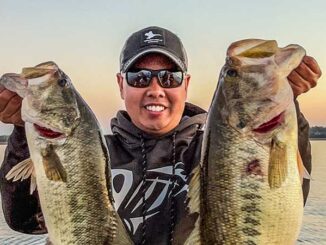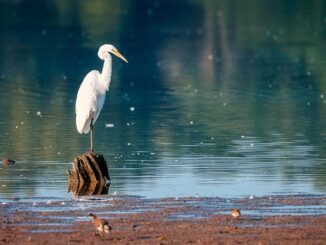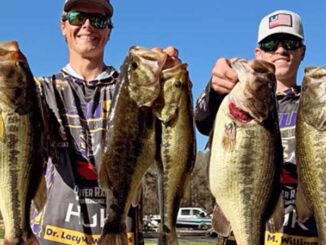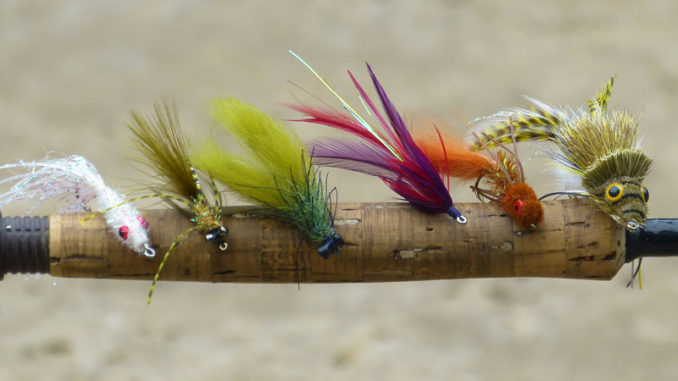
I admit to being a huge Audie Murphy fan. Murphy – who died tragically in a plane crash in 1971 – was the most decorated soldier of World War II.
After the war, actor James Cagney took Murphy under his wing and taught him the finer points of acting. Murphy went on to star in over 40 feature films, including his own biopic, “To Hell and Back.”
One of his most famous quotes has been applicable to my fishing.
“Actual combat experience is the only teacher,” Murphy once said. “You never come out of a skirmish without having picked up a couple of new tricks; without having learned more about your enemy.”
When it comes to bass on the fly, actual combat experience has been my greatest teacher. It’s taught me a few tricks about my favorite adversary.
The second season
While many flyrodders limit their pursuit of bass to the spring spawn, I anxiously await the “second season.” Early summer means bass of all sizes are actively feeding, putting on weight before the water gets hot and oxygen levels get low.
Early summer bass fishing requires adaptability. The fish will be most active at different locations during the day, each requiring a different strategy and different flies.
Top early and late
In early morning and late in the day, the fish will be close to banks or shallow structure, feeding on frogs and small baitfish. My go-to flies here are poppers and divers.
A wide variety of poppers will work, but my favorite is the Boogle Bug in frog green or Carolina Blue. If I had to fish one fly for bass – and only one – this would be it.
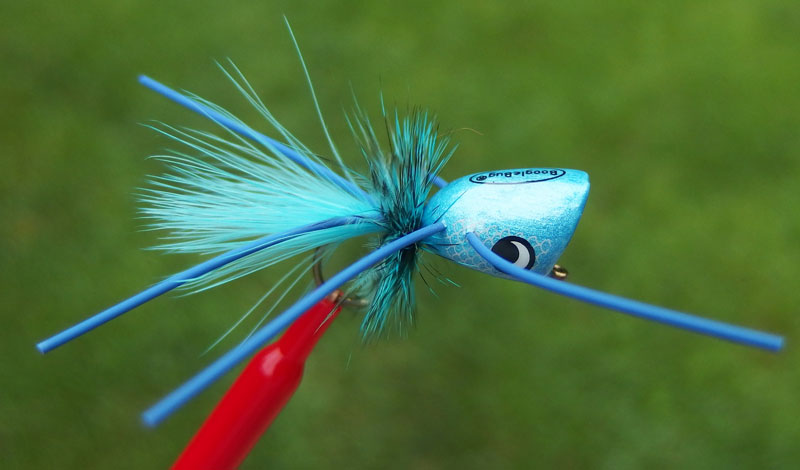
Constructed from deer hair and feathers, the Dahlberg Diver is a more versatile pattern. It can be worked slowly on the surface, or with strong strips, forced underneath. When it dives, tiny air bubbles trapped in the hair make a disturbance that draws strikes even in murky water.
Seaduce your opponent
As the sun rises, the bass will move out over shallow grass beds. Here I love fishing Seaducers.
Seaducers are the spinnerbaits of fly fishing. With constant stripping, they cover a good deal of water. The long tail feathers and flashy tail materials create reaction strikes.
When buying or tying a Seaducer, the hackle feathers are critical to what you want the fly to do. If you want it to push water – effective in milky or stained water – then the hackle fibers should be thick and stiff, and perpendicular to the hook shaft.
If you want the Ducer to have lots of pulsating movement – better in clear water – than the hackle feathers should be soft. Those tied with schlapplen feathers meet this criterion.
Flowing water
In early summer, I like to fish the upper parts of lakes where creeks flow in. These can be very effective for small to medium largemouths. And occasionally spotted bass.
Whether it’s creeks in the hills, or tidal cuts in brackish waters, one of my favorite new flies for moving waters is Ike’s Motion Minnow. I encountered this pattern while fishing with Ike Miller, a well-known smallmouth and muskie fly fishing guide on the St. Croix River in Wisconsin.
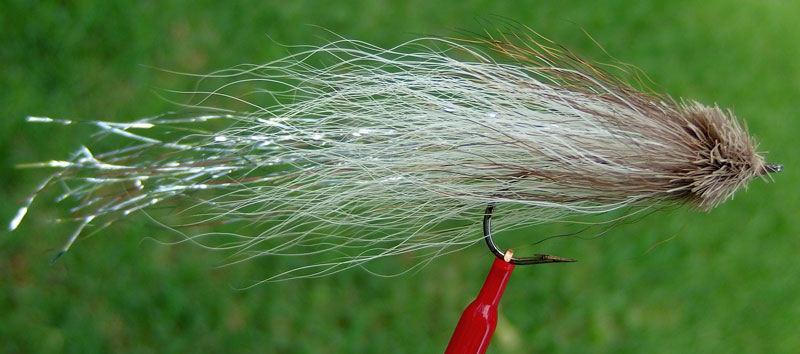
The head consists of loose spun deer hair; the 4-inch tail is a combination of EP Silky Fibers and fine opal flashabou. When stripped, the fly pushes water while the tail pulsates with marabou-like action.
School is in session
Threadfin shad are a high protein source for bass. They feed in schools on phytoplankton and zooplankton in open water.
In early summer, bass will chase these schools. When shad are fleeing from bass, they can’t outswim, they have to dart and dive. The key to success is using a fly that has vertical movement.
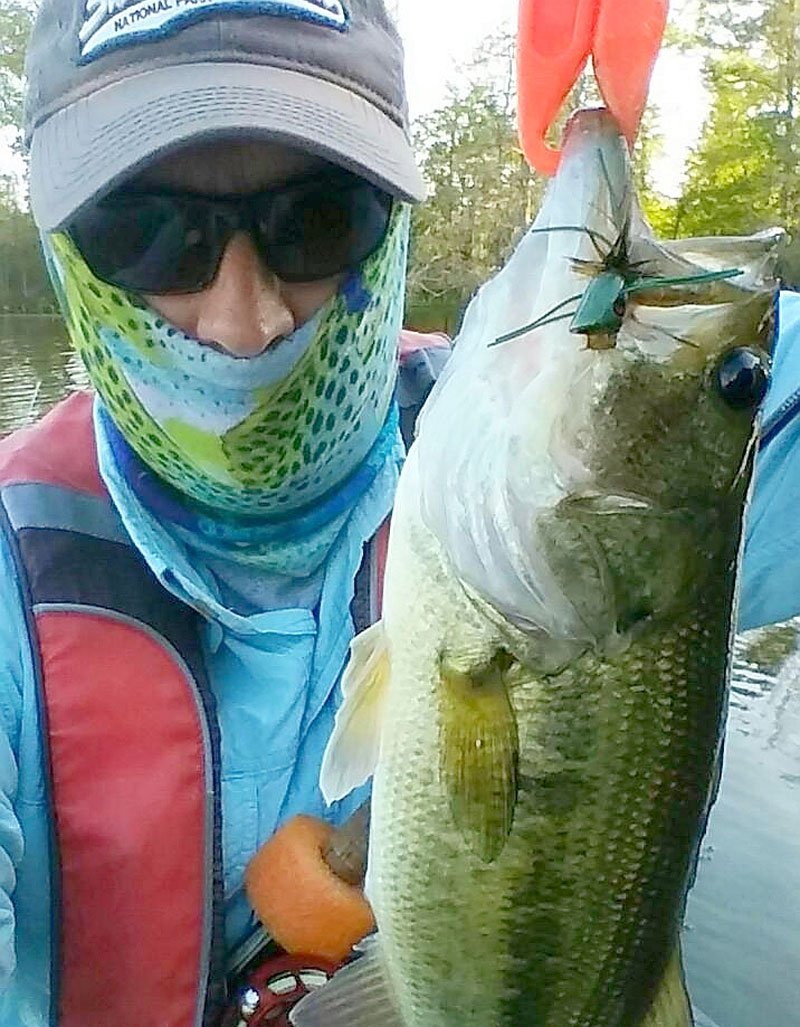
There are many shad imitations, but it’s hard to beat two time-proven weighted flies with great vertical motion: the Clouser Minnow and the Half & Half (half-Clouser, half-Deciever)
Another great pattern for shad runs is the Coma Cocaho. I created this fly twenty-five years ago as a fly version of the popular H&H Cocaho saltwater lure.
The Coma Cocaho tied with pearl ice chenille and sand/orange silli-legs has caught just about anything that eats shad. That list includes largemouth and smallmouth bass, sand bass, crappie, hybrid stripers and catfish!
Deep thoughts
During midday, I look for bass on the edges of dropoffs with structure. Several different flies are effective here. Nearly all work better with an intermediate fly line than a floating line.
The Bass Bully is one of the best imitations of a lizard. Its rabbit strip tail has incredible movement in the water.
The Moss Kray Phish and the Yukbugger Y2K are both excellent crawfish imitations. Unlike most crawfish flies that are too stiff, these have tons of motion in the water thanks to the use of rabbit and marabou in the composition of these flies.
When fishing these flies, I do a countdown approach to let the fly sink. Then make small strips and pauses in the retrieve. Many times, the strike comes on the first few strips.
Fly Fishin For The Mission
In April, the Mission Six non-profit held their 3rd annual “Fly Fishin For the Mission” tournament out of PAC Kayak Rentals in Pointe-aux-Chenes. Misson Six gives back to veterans and other heroes by introducing them to therapeutic forms of fishing.
Once again, there was a great story that came from this event.
Jessie Hamilton was one of several veterans who showed up a day early to take free fly fishing lessons from Donald Dehm of Floating Feathers Fly Fishing School in Madison, Alabama. By the end of the day, Dehm had Hamilton – a first-time flycaster – not only casting effectively but prepped for fighting his first red.
On tournament day, Hamilton teamed with Capt. Ty Hibbs and caught his first redfish ever on fly rod. Then he proceeded to catch four more! Hamilton and Hibbs won the Overall Division in the tournament, finishing ahead of 23 other teams.
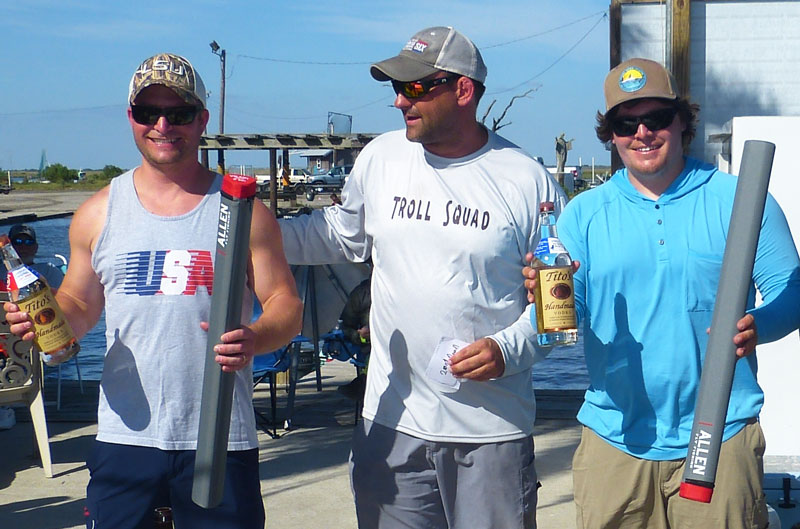
Hamilton thanked Dehm for the lessons, and Hibbs for spending the extra day to scout and guide him. He called the experience a “lasting memory.”
Fishing forecast
For contestants in the CCA STAR Fly Division, June is the best tournament month to catch large speckled trout. As summer progresses, and waters get hot, larger specks become more selective and less likely to eat flies.
Last June, good catches of 16+ inch trout were made around Hopedale, Lake Chien, and the backside of Grand Isle, using Half & Half (Clouser/Deceiver), Bubblehead Poppers, and weighted streamers.
Out west, Peveto and Holly beaches on calm days produced nice trout. Best flies were the white/olive Clousers and the pink LaFleurs Charlie.
Fly flingers hoping to tangle with the Spottail Elvis will find great sightcasting opportunities this month. The fish will be most active at the start of the rising tide. Just about any slider or crab pattern will work, but if not, there’s the always-reliable spoon fly.
If the major rivers fall this month, look for great action in the Atchafalaya Spillway for bull bream. Popping bugs are always a good bet, but if the fish don’t rise, try a Cap Spider or Jitterbee under a small strike indicator.
Flyrodders in New Orleans and Jefferson parishes are reporting larger-than-usual numbers of Rio Grande Perch, possibly due to the mild winter. Wet flies, Slow Sinking Spiders, and Sqwirmy Worms have been the ticket.
What’s happening
- All month – CCA STAR Tournament. Runs through Labor Day. Divisions include Fly Fishing East and West for heaviest speckled trout. Sponsored by Costa del Mar. Website: www.ccastar.com.
- June 1 (Sat) – Fly Tying Level 1, hosted by Pack & Paddle, 601 E. Pinhook, Lafayette. 9:30 a.m. – Noon. Cost $20. One-day, 2 1/2-hour hands-on clinic covering basics of fly tying. Students will tie two flies effective in Louisiana waters. Seats limited, so pre-registration required. For details, go to www.packpaddle.com.
- June 8 (Sat) – Fly Fishing 102: Sight Casting. Hosted by Orvis, 7601 Bluebonnet, Baton Rouge. 8 a.m. – 10:30 a.m. No cost. For novice anglers looking to advance, an introduction to sight casting strategies and techniques. For more info, call 225-757-7286.
- June 21 (Fri) – Fly Tying Happy Hour, hosted by Pack & Paddle, 601 E. Pinhook, Lafayette. 6 p.m. – 8 p.m. No cost. Bring your tying tools and materials and tie whatever flies you wish, or just come and watch. Beer provided from a local microbrewery. For more info, go to www.packpaddle.com.
